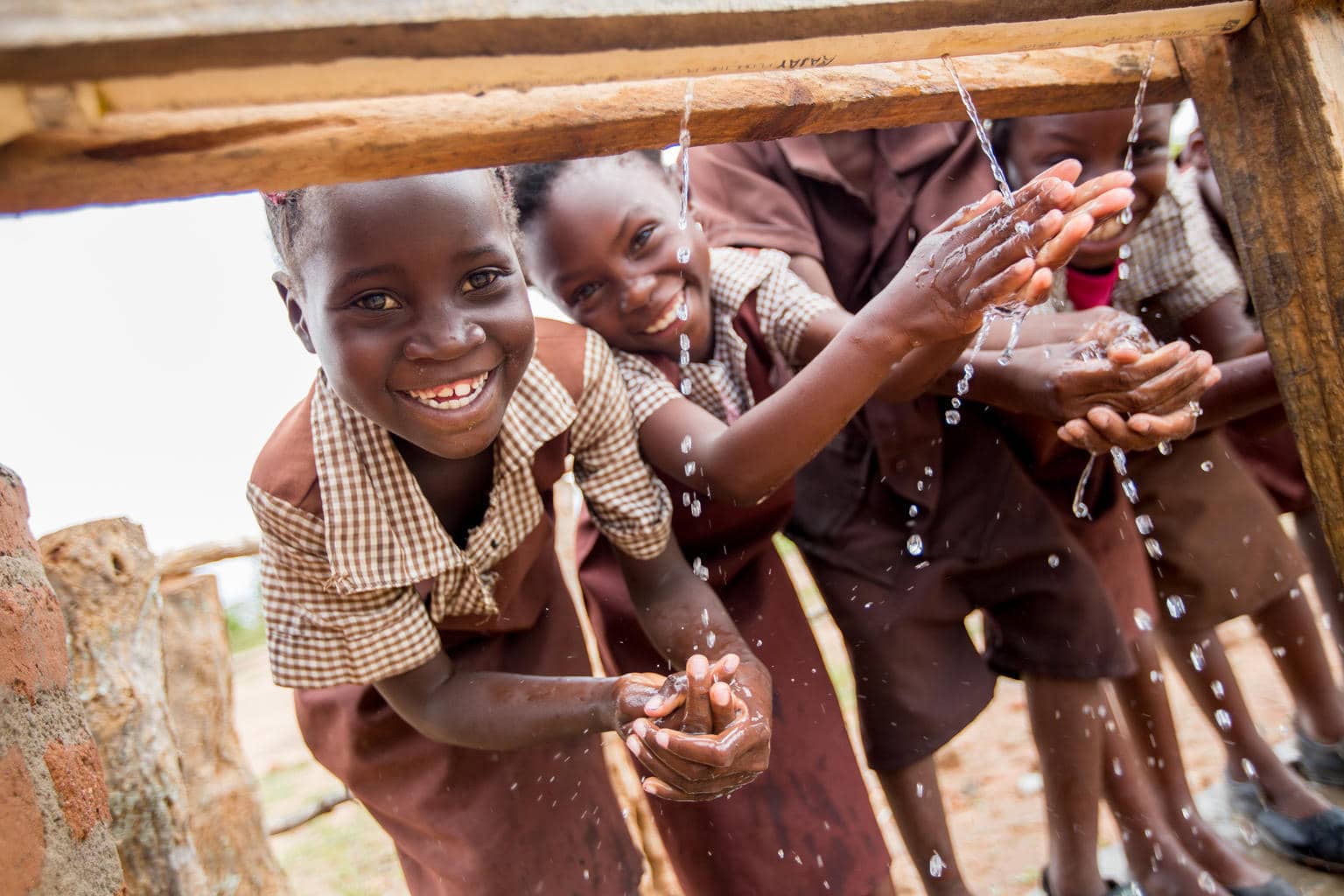Drinking water, sanitation and hygiene in schools: Global baseline report 2018

The global effort to achieve sanitation and water for all by 2030 is extending beyond the household to include institutional settings, such as schools, healthcare facilities and workplaces. This has been reinforced by global education for all strategies highlighting how water, sanitation and hygiene (WASH) in schools improves access to education and learning outcomes, particularly for girls, by providing a safe, inclusive and equitable learning environment for all. This report is the first comprehensive global assessment of WASH in schools and establishes a baseline for the Sustainable Development Goal (SDG) period.
Basic WASH in schools
The 2030 Agenda established ambitious SDG targets, which aim, among other things, for universal access to WASH for all and safe, inclusive and effective learning environments for all. It further calls for systematic attention to gender equality and the empowerment of women and girls in the implementation of the new Agenda.
Achieving universal access to basic WASH services in schools by 2030 presents a huge challenge. In many countries it will not only imply building and upgrading WASH facilities in schools but also strengthening Education Information Management Systems so they go beyond simply recording the availability of WASH infrastructure to take account of the quality of WASH services provided for students and staff. 2016 baseline estimates for basic water, sanitation and hygiene services were only available for 92, 101 and 81 countries respectively. Furthermore only 68 countries were able to generate national coverage estimates for all three types of basic WASH service in schools.
The new UNICEF/WHO Joint Monitoring Programme (JMP) ladders for WASH in schools
The JMP has developed new service ladders for WASH in schools to make it easier to benchmark and compare progress across countries. The new service ladders are primarily designed to track progress towards a basic level of drinking water, sanitation and hygiene service, which is the indicator selected for global monitoring of progress towards the WASH-related SDG targets. The ladders also distinguish between schools providing services that don’t fully meet the criteria for basic services (limited services) and schools that provide no service.
In the spirit of progressive realization, countries may first eliminate schools without any service at all, while making progress towards universal coverage of basic WASH services in schools. Basic services alone are not sufficient. The full realization of the human rights to education and to safe water and sanitation will require enhanced monitoring, using additional criteria that will need to be progressively integrated into national data systems to monitor advanced levels of WASH in schools.
Basic drinking water in schools
The provision of water at schools is one of the ‘highly effective practices in increasing access and learning outcomes’. In addition to the necessity of water to maintain personal and environmental hygiene, reducing student dehydration in schools has been associated with improved cognitive abilities. Globally, in 2016, 69% of schools had an improved source of drinking water with water available and were therefore classified as providing a basic drinking water service. A further 12% of schools had an improved source but water was unavailable at the time of the survey so they were therefore counted as providing a limited service. 19% of schools worldwide had no service, meaning they either relied on unimproved sources, such as an unprotected dug well, unprotected spring or surface water, or had no facility at all. This means nearly 570 million children worldwide lacked a basic service and had either limited or no drinking water service at their school.
Sanitation in schools
The availability of functional and private school toilets can positively impact health and learning outcomes, particularly for girls. Globally, in 2016, 66% of schools had improved single-sex sanitation facilities usable at the time of the survey and were therefore classified as providing a basic sanitation service. A further 12% of schools had improved facilities that were either not single-sex or not usable and were therefore counted as providing a limited service. 23% of schools worldwide had no service, and either relied on unimproved facilities, such as pit latrines without a slab or platform, hanging latrines or bucket latrines, or had no sanitation facility at all. On this basis it is estimated that over 620 million children lacked a basic service and had either a limited or no sanitation service at their school.
Hygiene in schools
Handwashing has strong links to health, particularly in public or institutional settings. Globally, in 2016, 53% of schools worldwide had handwashing facilities with soap and water available at the time of the survey and were therefore classified as having a basic hygiene service. 11% had handwashing facilities but no soap available at the time of the survey so they were counted as providing a limited service. 36% of schools had no handwashing service. It is therefore estimated that over 850 million children lacked a basic service and either had a limited or no handwashing service at their school.